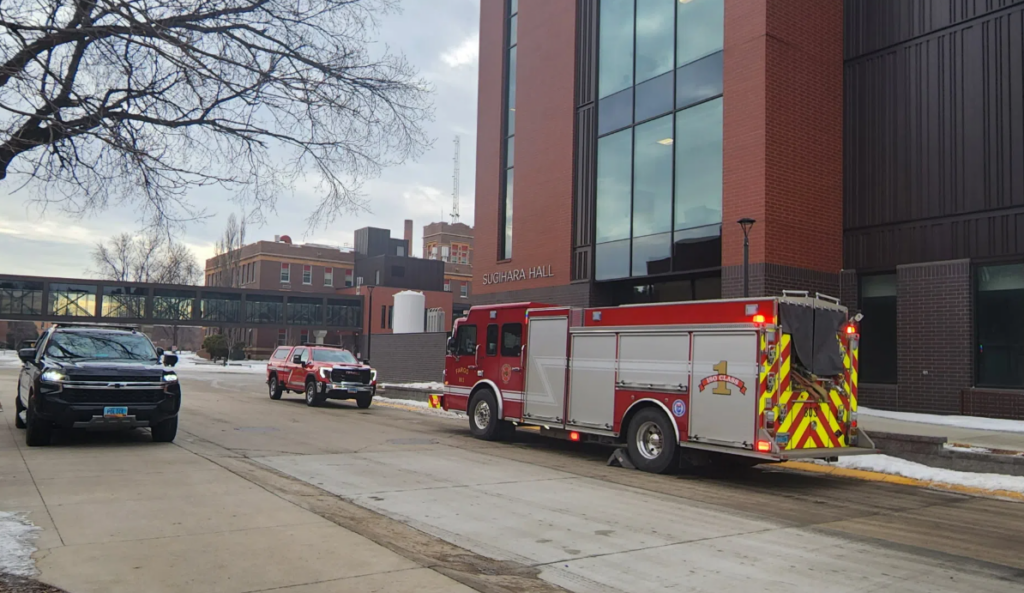Policy change allows UND, NDSU to offer dual-credit classes for high schoolers
Decision aims to give students more choices, but could bring financial hit to smaller colleges

FARGO, N.D. (North Dakota Monitor / KVRR) — Families in Cass and Grand Forks counties may soon have different options for college courses for high school students.
The State Board of Higher Education last week approved a policy change that allows high school students in those counties to take dual-credit courses — earning both high school and college credit — through the University of North Dakota and North Dakota State University.
Students in Cass and Grand Forks counties had previously been required to take dual-credit classes through one of North Dakota’s smaller public colleges, with the college getting the tuition revenue. Those students could only take a dual-credit course from UND or NDSU if it was not offered at a smaller college.
Leaders of those smaller colleges have resisted the change in part because of the tuition revenue they get from students taking introductory college courses while they are still in high school.
Those colleges include North Dakota State College of Science in Wahpeton, Valley City State University, Mayville State University and Lake Region State College in Devils Lake.

North Dakota State College of Science President Rod Flanigan (Provided by North Dakota University System)
Rod Flanigan, president of North Dakota State College of Science, a two-year school, said the change could cost his school millions of dollars in revenue annually.
The college in Wahpeton in Richland County has about 1,500 dual-credit students this semester, most of them from Cass County, the neighboring county to the north.
“It will have an impact on us,” Flanigan told the State Board of Higher Education when it met Tuesday at Minot State University. “We will compete as best we can.”
Advocates for the change said the policy should be about choice for students, not the financial health of the small colleges.
State Board of Higher Education member Curtis Biller said during a Sept. 4 committee meeting that if there are financial implications for the small colleges, “we can deal with it as we move forward.”
It will be up to NDSU and UND to work with high schools on which courses to make available through dual credit.
NDSU Provost David Bertolini said the university will reach out to high schools in Cass County to understand what the schools, parents and students want for dual-credit offerings.
“We get requests from students who want to do dual credit with us, and historically, we have to say ‘no,’” Bertolini said in an interview. “From the perspective of what families and students might want for themselves, their hopes and dreams for college or whatever their careers might be, student choice is paramount.”
Historically, the university system has encouraged campuses to operate in their own region.
Another college that could be significantly impacted is Lake Region, which has about 250 dual credit students from nearby Grand Forks County, home to UND.
UND President Andy Armacost said it would work with Lake Region to minimize the impact on the two-year school.
“We need to sit down and figure out how this is going to work,” Armacost said at Tuesday’s meeting. He acknowledged that there would be pressure from Grand Forks residents who would prefer to use UND for dual credit over Lake Region.
Carmen Simone, who was appointed Lake Region president earlier in the meeting after serving as interim over the summer, said the college would work with UND. “I’m not afraid of this change,” Simone said.
How dual credit works
Lisa Johnson, deputy commissioner for the North Dakota University System, said in an interview that students generally take a dual-credit course one of two ways — either in person within their high school or as an online course.
In-person classes at the high school are taught by a high school instructor who has the required credentials, such as a master’s degree and a certain number of college credit hours in the subject area.
For online courses, Johnson said those are typically taught by a college instructor. She said that option, while more expensive, is popular in rural school districts that won’t have enough students to justify an in-person class. Students from several schools can be grouped together for an online class, which can still take place during regular school hours.
The North Dakota University System has targeted dual-credit offerings to high-demand classes, such as English 101 and college algebra that can help fulfill general education requirements and are easily transferable through North Dakota’s colleges.

North Dakota University System Deputy Commissioner Lisa Johnson speaks Sept. 24, 2025, to a legislative committee in Bismarck. (Photo by Jeff Beach/North Dakota Monitor)
Johnson said earning college credit through NDSU or UND, the state’s two research colleges, would carry no more weight than through a smaller college, though that perception might exist.
“I think the extent to which they no longer enroll in community colleges and four-year regionals and gravitate to research institutions remains to be seen,” she said.
Johnson said a high school can partner with more than one college on dual-credit classes.
If two colleges were offering the same course, Johnson said the high school would select which institution to partner with.
Growth in dual credit
Johnson said dual credit has evolved over the decades. She said it started with the two-year colleges such as Lake Region and the State College of Science back in the 1980s.
Four-year colleges eventually began offering dual credit courses, and online courses have greatly expanded dual-credit opportunities.
“We actually have hundreds and hundreds of online courses,” Johnson said.
Johnson said growth also was spurred when the state Legislature approved funding for a scholarship program in 2021. The scholarship provides $250 per course, up to three courses.
“We really saw a marked increase in students participating in dual credit after the announcement of that dual credit scholarship,” Johnson said.
There also is a program through the Bank of North Dakota to cover dual-credit tuition for families who qualify for free and reduced school meals.
Johnson said a goal of Brent Sanford, who was just named the University System’s commissioner, to expand dual-credit offerings at high schools with career and technical education centers.
High school students have other options for earning college credit. Under early entry, a high school can take a college course that may not count toward high school graduation. Students also can take advanced placement classes, which may provide college credit depending on the student’s score on a standardized test.
Bertolini said an average student coming to NDSU already has 12 college credits, typically through dual credit, and he expects that to keep growing.
“It’s one way to lower college expenses, reduce your time to degree,” Bertolini said. “It also allows them, in an earlier framework, to figure out what they want to do for the rest of their lives.”






